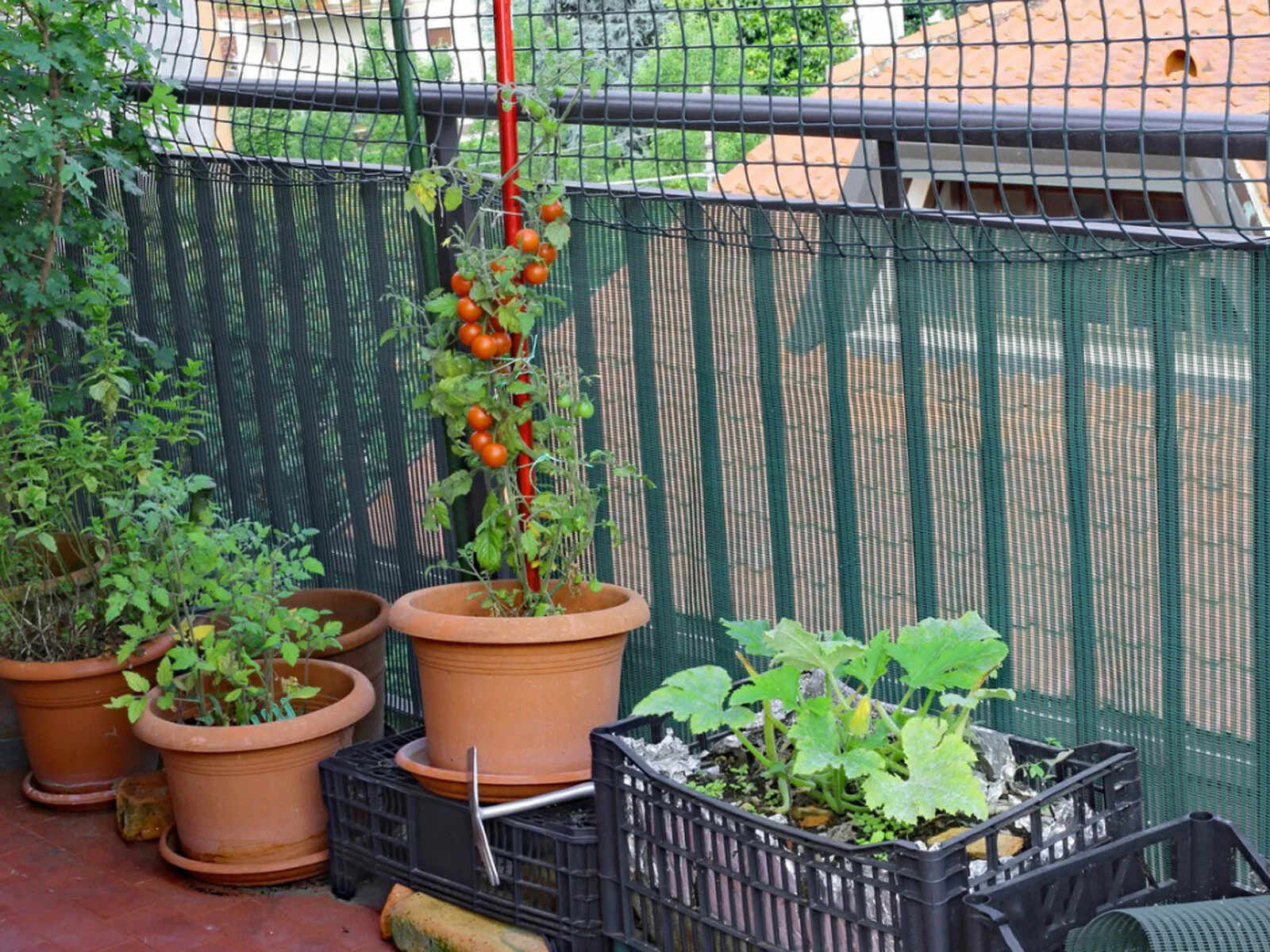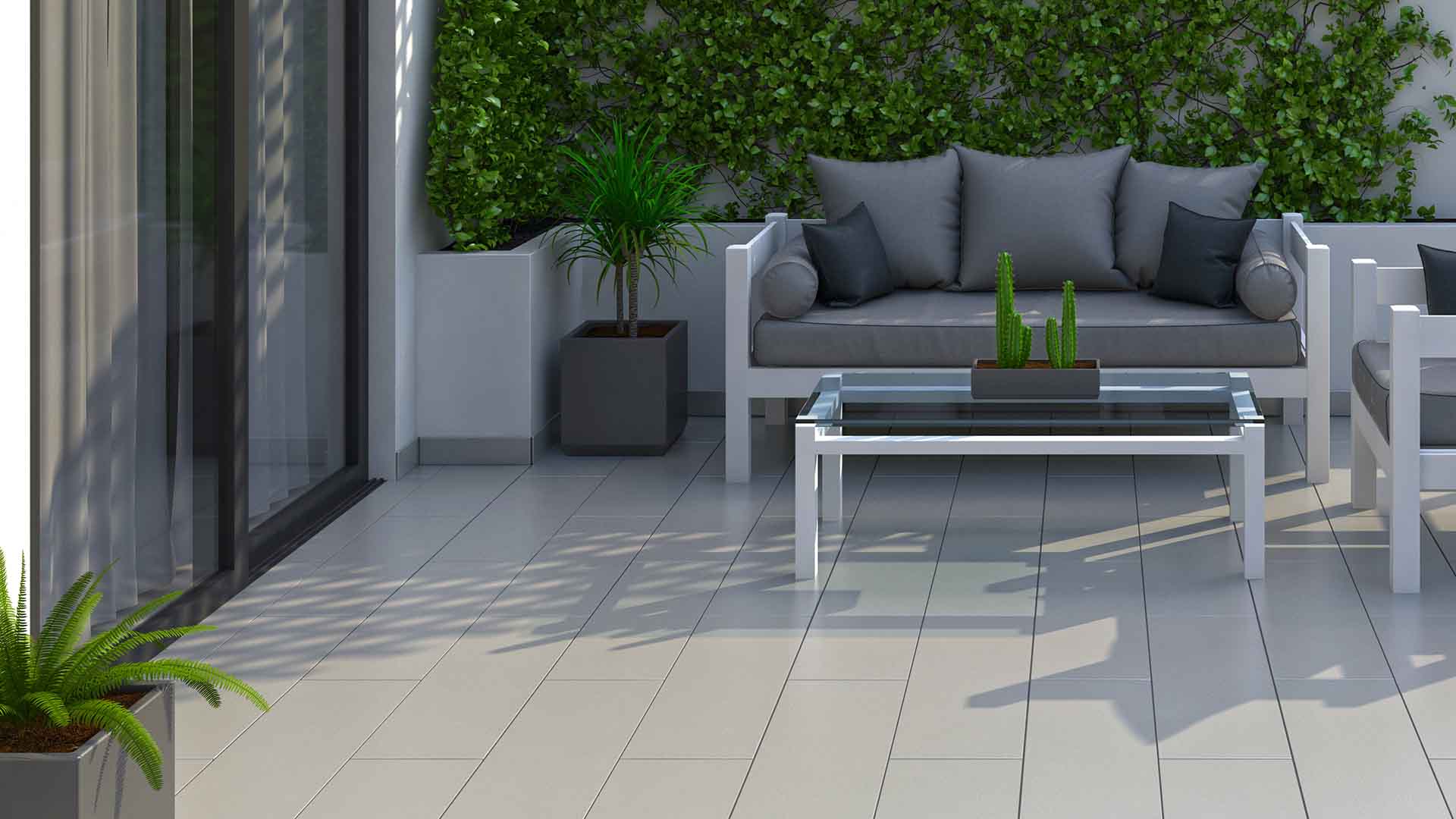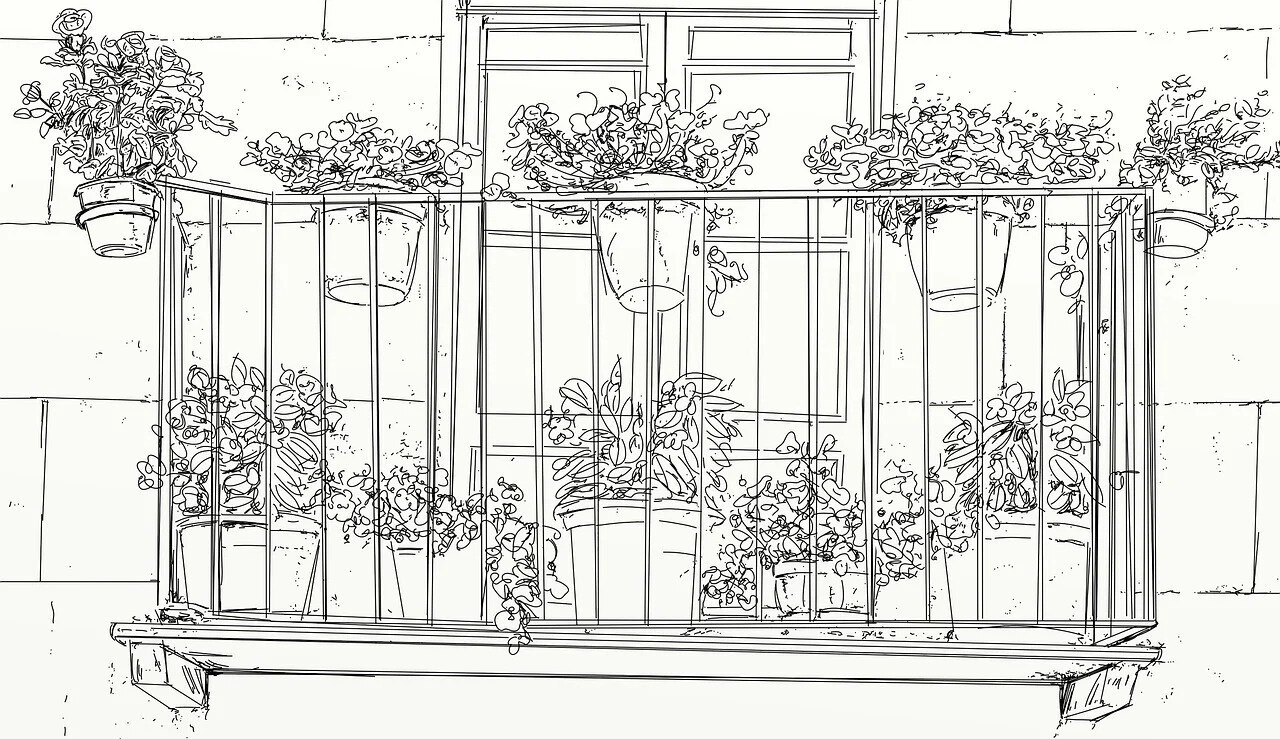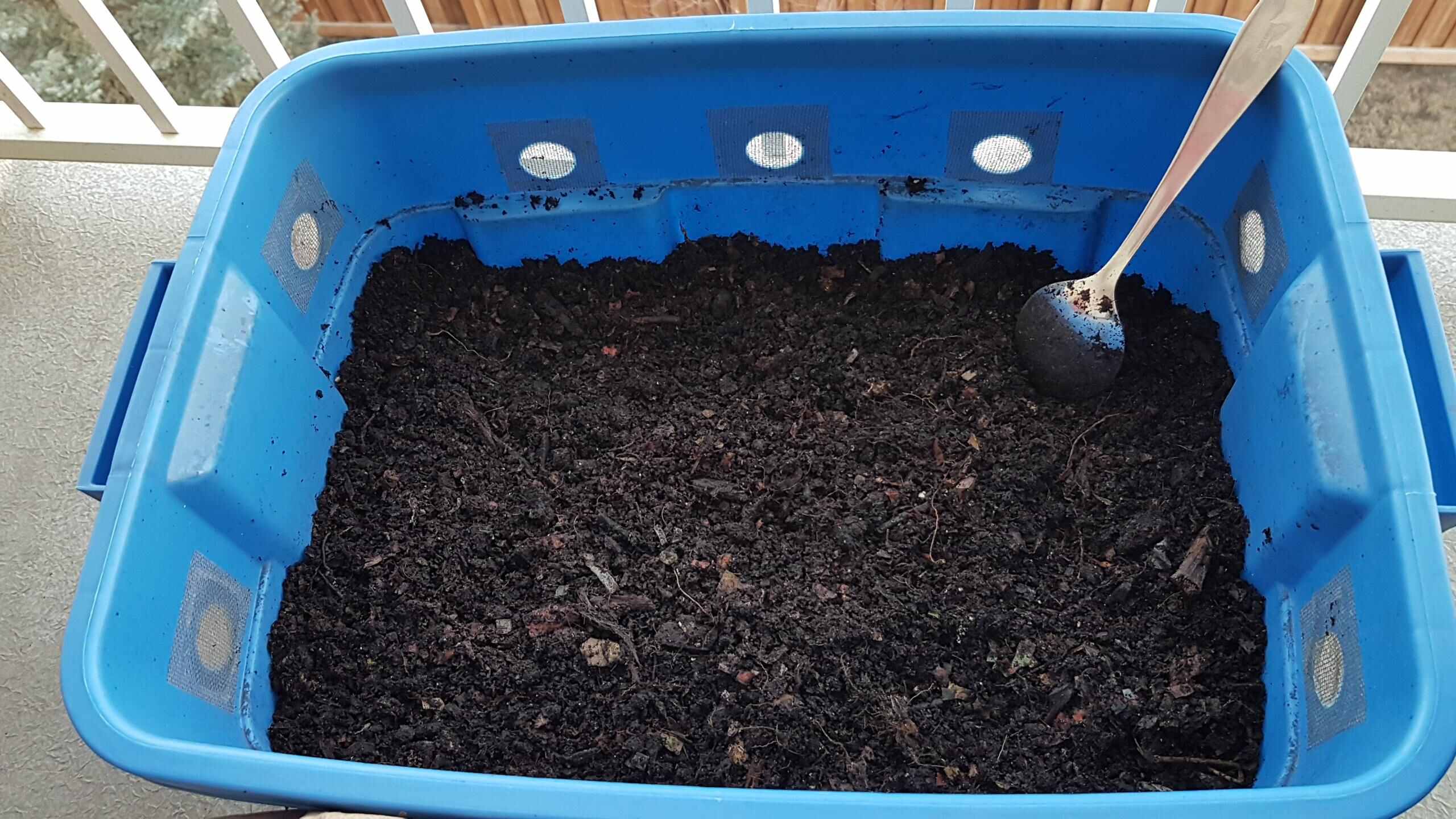

Articles
How To Grow Vegetables In Balcony
Modified: December 7, 2023
Learn how to grow vegetables in your balcony with these informative articles. Discover tips and tricks for maximizing your space and creating an urban garden.
(Many of the links in this article redirect to a specific reviewed product. Your purchase of these products through affiliate links helps to generate commission for Storables.com, at no extra cost. Learn more)
Introduction
Growing vegetables in a balcony is not only a great way to reap the benefits of fresh produce, but it’s also a rewarding and fulfilling hobby. Whether you live in an apartment or a house with a small outdoor space, balcony gardening allows you to make the most of your available area and enjoy the satisfaction of growing your own food.
Not only does balcony gardening provide you with a sustainable source of nutritious vegetables, but it also offers several other benefits. First and foremost, it allows you to have complete control over the quality and safety of the vegetables you consume. You can grow your vegetables using organic methods, avoiding the use of harmful pesticides or herbicides.
Additionally, balcony gardening is a fantastic way to connect with nature and experience the joy of gardening firsthand. It provides a sense of satisfaction and accomplishment when you see your seeds sprout, plants grow, and eventually harvest your homegrown vegetables. Plus, having greenery on your balcony adds aesthetic value to your living space.
Despite the limited space, growing vegetables in a balcony is entirely possible with proper planning and implementation. In this article, we will guide you through the steps of creating a balcony garden and share tips and techniques to optimize your vegetable growth.
Let’s get started and unlock the secrets of growing vegetables in your very own balcony garden!
Key Takeaways:
- Embrace the Joy of Balcony Gardening: Experience the satisfaction of growing your own vegetables, connecting with nature, and enjoying fresh, pesticide-free produce right at your doorstep.
- Small Space, Big Rewards: Overcome limitations with balcony gardening, save money, reduce your environmental impact, and enjoy the mental and physical benefits of nurturing your own thriving vegetable garden.
Read more: How To Grow Tomatoes On Balcony
Benefits of Growing Vegetables in a Balcony
Growing vegetables in a balcony offers numerous benefits that go beyond just having easy access to fresh produce. Here are some of the advantages of balcony gardening:
- Space Utilization: Balcony gardening allows you to make the most of limited space. Even if you have a small balcony, you can grow a variety of vegetables vertically by using trellises, hanging baskets, and tiered planters.
- Fresh and Nutritious Produce: By growing your own vegetables, you have the advantage of harvesting them at their peak freshness. This ensures that you are consuming nutrient-rich produce with maximum flavor and health benefits.
- Cost Savings: Growing vegetables on your balcony can save you money in the long run. Instead of buying expensive organic produce from the grocery store, you can grow your own vegetables at a fraction of the cost.
- Control Over Pesticides: One of the main advantages of balcony gardening is that you have complete control over the use of pesticides. You can opt for organic gardening methods, avoiding harmful chemicals and ensuring that you are eating pesticide-free vegetables.
- Convenience: Having a balcony garden allows you to have quick and easy access to fresh vegetables right at your doorstep. You can simply step outside, harvest what you need, and incorporate it into your meals immediately.
- Relaxation and Stress Relief: Gardening in general has been proven to have a positive impact on mental well-being. Spending time in your balcony garden, tending to your plants and enjoying the peacefulness of nature, can provide a sense of relaxation and relief from daily stress.
- Environmental Impact: By growing your own vegetables, you are contributing to a more sustainable and eco-friendly lifestyle. You reduce your carbon footprint by minimizing the transportation required to bring produce to your table.
- Educational Value: Balcony gardening is an educational experience, especially if you involve children. It teaches them about the importance of nature, the process of growing food, and the value of sustainable practices.
These are just a few of the benefits of growing vegetables in a balcony garden. No matter the size of your balcony, you can create a thriving vegetable garden that brings joy, health, and abundance to your life.
Choosing the Right Vegetables
When it comes to choosing the right vegetables for your balcony garden, there are a few factors to consider. Here are some tips to help you make the best choices:
- Size and Space: Take into account the size of your balcony and the available space for your vegetable plants. Some vegetables, like tomatoes and peppers, require more space to grow, while others, like herbs and leafy greens, can be grown in smaller containers.
- Suitability for Containers: Look for vegetables that are well-suited for container gardening. Choose varieties that have compact growth habits and do well in smaller spaces. Dwarf and bush varieties of plants are often a good choice for balcony gardens.
- Climate and Sunlight: Consider the climate and sunlight conditions on your balcony. Some vegetables, like tomatoes and peppers, thrive in full sunlight, while others, like leafy greens and herbs, can tolerate partial shade.
- Preferences and Usage: Think about your preferences and how you plan to use the vegetables. If you enjoy salads, consider growing lettuce, spinach, and other leafy greens. If you love cooking, herbs like basil, thyme, and rosemary can be a great addition to your balcony garden.
- Succession Planting: To maximize your harvest, consider practicing succession planting. Choose vegetables that have shorter growing seasons and can be harvested quickly. This allows you to continuously plant new crops throughout the growing season and enjoy a continuous supply of fresh vegetables.
- Companion Planting: Explore the concept of companion planting to optimize the space and health of your balcony garden. Some vegetables thrive when planted together, while others may inhibit each other’s growth. For example, planting basil with tomatoes can enhance the flavor of both plants.
- Personal Preferences: Above all, choose vegetables that you and your family enjoy eating. There is no point in growing vegetables that you won’t use or enjoy. Select varieties that you are excited about and will be motivated to care for and harvest.
Remember, the key is to maximize the potential of your balcony garden and grow vegetables that are suitable for your space, climate, and personal preferences. By making informed choices, you can create a diverse and productive balcony garden that brings you joy and delicious homegrown produce.
Selecting Containers
Choosing the right containers for your balcony garden is essential for the success of your vegetable plants. Here are some factors to consider when selecting containers:
- Size: The size of your containers will depend on the size of the vegetables you plan to grow. Larger vegetables, like tomatoes and peppers, require bigger pots, while smaller vegetables, like herbs and lettuce, can thrive in smaller containers.
- Drainage: Ensure that your containers have adequate drainage holes to prevent waterlogging and root rot. You can use gravel or broken pottery pieces at the bottom of the container to improve drainage.
- Material: Containers are available in various materials, including plastic, terracotta, ceramic, and fabric. Plastic containers are lightweight and retain moisture well, while terracotta and ceramic containers provide better breathability but can dry out quickly. Fabric containers are an excellent option for their portability and good drainage.
- Weight: Consider the weight of the containers, especially if you have a balcony with weight restrictions. If weight is a concern, opt for lightweight plastic or fabric containers.
- Vertical Gardening: To maximize space, consider using vertical gardening techniques. Hanging baskets, wall-mounted planters, or trellises can be used to grow vine vegetables like cucumbers or beans, freeing up space on the floor.
- Self-Watering Containers: If you are concerned about watering frequency, you can invest in self-watering containers. These containers have a reservoir that stores water, ensuring that your plants receive a consistent water supply.
- Aesthetics: Balcony gardens can be aesthetically pleasing, so select containers that match your style and complement your outdoor space. You can choose colorful containers, decorative pots, or even repurpose old buckets or crates for a unique look.
- Container Maintenance: Consider the maintenance required for different types of containers. Plastic containers are low maintenance and easy to clean, while terracotta and ceramic containers may require more attention to prevent them from drying out.
Remember to group plants with similar water and sunlight requirements together in the same containers. This will make it easier to care for your vegetable plants and ensure their optimal growth.
By carefully selecting containers that meet the needs of your vegetable plants and your balcony garden space, you’ll be setting the stage for healthy and thriving vegetables throughout the growing season.
Soil and Fertilizers
The right soil and fertilizers are crucial for the success of your balcony vegetable garden. Here are some important considerations:
Choosing the Right Soil:
Use a high-quality potting mix specifically formulated for container gardening. Avoid using garden soil, as it can be too dense and may lack the necessary nutrients for container plants. Potting mixes are lightweight, well-draining, and rich in organic matter, providing an ideal environment for vegetable roots to thrive.
Adding Organic Matter:
Enrich your potting mix by adding organic matter such as compost, well-rotted manure, or worm castings. Organic matter improves soil structure, enhances water retention, and gradually releases nutrients to the plants. Mix in a handful of organic matter when planting or top-dress the soil periodically throughout the growing season.
Providing Essential Nutrients:
Vegetables require a steady supply of nutrients to grow and produce bountiful harvests. To ensure optimal nutrition, use organic fertilizers or slow-release granules that are specifically formulated for vegetables. Follow the package instructions for application rates and frequency to avoid over- or under-fertilizing your plants.
Feeding with Liquid Fertilizers:
In addition to slow-release fertilizers, supplement your balcony garden with liquid fertilizers to provide a quick nutrient boost. Use a balanced liquid fertilizer or make your own organic fertilizer by steeping compost or worm castings in water. Apply liquid fertilizers according to the recommended dosage and frequency to promote healthy plant growth.
Maintaining Soil Moisture:
Proper moisture management is essential for the health of your vegetable plants. Ensure that your pots have good drainage to prevent waterlogging, which can lead to root rot. A layer of mulch on top of the soil can help retain moisture and regulate the soil temperature, reducing water evaporation.
Regular Soil Testing:
Periodically test your soil’s pH levels and nutrient content to ensure that your plants are receiving the right balance of nutrients. You can purchase soil testing kits or send soil samples to a laboratory for analysis. Adjust the pH and nutrient levels as necessary to optimize plant growth.
Organic Pest Control:
Consider using organic pest control methods to protect your vegetable plants from common pests. Neem oil, insecticidal soaps, and companion planting with pest-repellent plants can help mitigate pest problems without relying on harsh chemicals.
By providing your vegetable plants with nutrient-rich soil and proper fertilization, you’ll be setting the foundation for healthy growth and abundant harvests in your balcony garden.
Read more: How To Grow Herbs On Balcony
Watering and Drainage
Proper watering and drainage are crucial for the health and success of your balcony vegetable garden. Here are some tips to help you effectively manage water and ensure adequate drainage:
Watering Guidelines:
- Water your vegetable plants consistently and regularly. Monitor the moisture level in the soil and adjust your watering schedule based on the needs of your specific plants.
- Check the moisture level by sticking your finger about an inch into the soil. If it feels dry, it’s time to water. If it’s still damp, hold off on watering for a little longer.
- Avoid overwatering, as it can lead to root rot and other moisture-related problems. Allow the top inch or so of the soil to dry out between waterings.
- Water deeply to ensure that the water reaches the roots of the plants. Shallow watering can encourage shallow root growth and make the plants more susceptible to stress.
- Early morning or late afternoon is the best time to water your vegetable garden. This allows the water to soak into the soil before the heat of the day evaporates it, minimizing water loss.
Drainage Considerations:
- Ensure that your containers have proper drainage holes to prevent waterlogging. If your containers don’t have drainage holes, you can either drill holes yourself or use a layer of gravel or broken pottery pieces at the bottom to improve drainage.
- Avoid letting your containers sit in standing water. Use saucers or trays under the pots to catch excess water, but empty them promptly to prevent roots from sitting in stagnant water.
- Maintain good airflow around your pots to help dry out the soil and prevent fungal diseases. Avoid overcrowding the plants and ensure there is space between the pots for air circulation.
- Consider using self-watering containers that have a built-in reservoir to ensure a consistent supply of water while preventing overwatering.
Additional Watering Tips:
- Avoid overhead watering, if possible, as it can lead to fungal issues. Instead, water at the base of the plants, directing the water to the root zone.
- Use a watering can with a narrow spout or a hose with a gentle spray attachment for more precise and targeted watering.
- Consider using a drip irrigation system or installing a timer on your hose to automate watering and ensure consistent moisture levels.
- Monitor the moisture level of your plants during hot and dry periods. They may require more frequent watering to prevent wilting and stress.
By paying attention to proper watering techniques and ensuring adequate drainage, you’ll provide your balcony vegetable garden with the essential moisture it needs to thrive and flourish.
Choose the right vegetables for your balcony based on the amount of sunlight it receives. Leafy greens like lettuce and spinach, as well as herbs like basil and parsley, are good options for shadier balconies, while tomatoes, peppers, and cucumbers thrive in sunny spots.
Providing Adequate Sunlight
Adequate sunlight is essential for the healthy growth and development of your balcony vegetable garden. Here are some tips to ensure your plants receive the right amount of sunlight:
Observe the Sunlight Patterns:
- Take note of the sunlight patterns on your balcony throughout the day. Observe which areas receive the most sunlight and for how long. This will help you determine the ideal placement for your vegetable plants.
- Most vegetables require a minimum of six hours of direct sunlight per day for optimal growth. Some fruiting vegetables, such as tomatoes and peppers, may benefit from even more sunlight.
Choose the Right Location:
- Select a location on your balcony that receives the maximum amount of sunlight. South-facing balconies typically provide the best sunlight exposure, but east or west-facing balconies can also be suitable depending on the specific plants you’re growing.
- Minimize obstructions that may block sunlight, such as tall buildings, walls, or overhanging structures. Prune any nearby trees or shrubs that may cast shade on your vegetable garden.
- If your balcony doesn’t receive enough sunlight, consider using reflective surfaces or mirrors to redirect sunlight onto your plants. You can also experiment with grow lights to supplement natural sunlight if necessary.
Rotate the Containers:
- To ensure all parts of your plants receive sufficient sunlight, rotate your containers periodically. This will prevent uneven growth and allow all sides of the plant to receive equal exposure.
Protect from Excessive Heat:
- In hot climates or during intense summer months, balcony plants can be exposed to excessive heat. Protect your vegetables from scorching by providing shade during the hottest part of the day. You can use shade cloth, umbrellas, or move the plants to a slightly shaded area temporarily.
- Ensure proper airflow around your plants to prevent heat buildup. Avoid crowding them together, as this can block air circulation and trap heat.
Monitor Plant Reactions:
- Watch for signs of sunburn or heat stress in your plants, such as wilting, yellowing leaves, or browning. Adjust their exposure accordingly to prevent further damage.
- Keep in mind that different vegetables have varying tolerance to sunlight. Some leafy greens, herbs, and cool-season vegetables can tolerate partial shade, while others require full sun.
Consider Vertical Gardening:
- If your balcony doesn’t have ample space for containers in direct sunlight, consider utilizing vertical gardening techniques. You can grow vining vegetables, such as cucumbers or beans, on trellises or vertical planters to optimize sunlight exposure.
- Use reflective surfaces or mirrors strategically to bounce sunlight onto shaded areas or vertical planters.
By providing your balcony vegetable garden with adequate sunlight, you’ll promote healthy photosynthesis, robust growth, and bountiful harvests.
Pest Control
Pests can be a common challenge in balcony vegetable gardens, but with the right strategies, you can effectively manage them and protect your plants. Here are some tips for pest control:
1. Identify Common Pests:
Familiarize yourself with common pests that affect vegetable plants, such as aphids, whiteflies, mealybugs, caterpillars, and spider mites. Learn to identify their presence and the damage they cause to take prompt action.
2. Implement Preventive Measures:
- Promote plant health and resilience by providing adequate sunlight, proper watering, and balanced nutrition. Healthy plants are more resistant to pest infestation.
- Regularly inspect your plants for any signs of pest activity, such as chewed leaves, sticky residue, or wilting foliage.
- Practice good garden hygiene by removing dead leaves, debris, and weeds as they can harbor pests and diseases.
- Consider companion planting to deter pests naturally. For example, marigolds, nasturtiums, and basil can repel certain insects.
- Encourage natural predators and beneficial insects like ladybugs, lacewings, and praying mantises to populate your balcony garden. They can help keep pest populations in check.
3. Organic Pest Control Methods:
- Use insecticidal soaps or neem oil, both of which are effective organic options for controlling aphids, mealybugs, and other soft-bodied insects. Follow the product instructions carefully.
- Homemade remedies like a garlic or chili pepper spray can also deter pests. Dilute them in water and spray on affected plants.
- Introduce microbial insecticides, like Bacillus thuringiensis (Bt), which specifically target caterpillars and other leaf-eating pests.
4. Handpicking Pests:
- If the pest population is manageable, manually remove them by handpicking or using a gentle spray of water to dislodge them from the plants.
- Place sticky traps near your plants to catch flying insects like whiteflies and fungus gnats.
5. Natural Barriers and Traps:
- Protect your plants with physical barriers like netting or row covers to prevent pests from reaching them.
- Set up traps, such as beer traps for slugs or yellow sticky traps for flying insects, to trap and control specific pests.
6. Regular Monitoring and Swift Action:
- Check your plants regularly for any signs of pest activity. Early detection allows for quicker intervention and prevents widespread infestations.
- If an infestation is severe, consider removing heavily affected plants to prevent the spread of pests to other plants.
Remember to always follow the instructions on pest control products and use organic and environmentally friendly options whenever possible. By implementing effective pest control strategies, you can protect your balcony vegetable garden and enjoy a healthy and thriving harvest.
Maintenance and Care
Maintaining and caring for your balcony vegetable garden is key to ensuring its long-term success. Here are some essential maintenance and care tips to keep your plants thriving:
Regular Watering:
- Establish a regular watering schedule and be consistent in watering your plants. Adjust the frequency and amount based on weather conditions, plant needs, and the moisture level in the soil.
- Monitor the soil moisture and water deeply, ensuring that the water reaches the root zone of the plants. Avoid overwatering or allowing the soil to dry out completely.
Proper Pruning:
- Regularly prune your plants to promote bushier growth and improve airflow. Remove any dead, damaged, or yellowing leaves to prevent the spread of diseases or pests. Prune back leggy or overgrown stems to encourage compact growth.
- Pinch off the tips of herbs to promote branching and a fuller appearance.
Fertilizer Application:
- Continue to provide your plants with a balanced fertilizer or organic amendments throughout the growing season. Follow the recommended dosage and frequency to ensure proper nutrition without over-fertilizing.
- Top-dress the soil with compost or organic matter to replenish nutrients and improve soil fertility.
Weed Control:
- Regularly inspect your balcony garden for weeds and remove them promptly. Weeds compete with your vegetable plants for nutrients, water, and sunlight, so it’s important to keep them in check.
- Consider using organic mulch, such as straw or wood chips, to suppress weed growth and retain moisture in the soil.
Support and Staking:
- Install supports or stakes for tall or vining plants like tomatoes, cucumbers, or beans. This helps prevent them from toppling over and provides better air circulation.
- Regularly check the ties and adjust them as the plants grow to avoid damaging the stems.
Regular Inspection:
- Stay vigilant and inspect your plants regularly for signs of pests, diseases, or nutrient deficiencies. Early detection allows for prompt intervention and prevents further damage.
- Check for any signs of stress, such as yellowing leaves, wilting, or stunted growth, and take appropriate action to address the underlying cause.
Harvesting:
- Harvest your vegetables when they are mature and ready to be consumed. This promotes further production and encourages the development of new fruits.
- Use sharp and clean garden shears or pruners to harvest your vegetables to avoid damaging the plants.
Seasonal Care:
- Adjust your care routine based on the changing seasons. In colder climates, protect your plants from frost or move them indoors if necessary. In hotter climates, provide shade or additional watering during peak summer months.
- Consider crop rotation by changing the location of your vegetables in each growing season to prevent the buildup of pests or diseases.
By following these maintenance and care practices, you’ll create an environment where your balcony vegetable garden can thrive, ensuring a bountiful harvest and a fulfilling gardening experience.
Read more: What Can You Grow On A Balcony
Harvesting Vegetables
Harvesting your homegrown vegetables from your balcony garden is an exciting and rewarding experience. Here are some guidelines for a successful harvest:
Timing:
- Harvest your vegetables at the appropriate stage of maturity. Each vegetable has its own ideal harvesting time, which can vary based on the variety and growing conditions.
- Observe the visual cues and use your senses to determine when a vegetable is ready to be harvested. Look for color changes, firmness, and size as indicators of maturity. Additionally, vegetables like tomatoes and cucumbers should be harvested when they are fully ripe but still firm.
Harvesting Techniques:
- Use clean and sharp garden shears, pruners, or a knife to harvest your vegetables. This helps prevent damage to the plant and ensures clean cuts.
- For leafy greens and herbs, you can either harvest the outer leaves or cut the entire plant, depending on your needs. Harvesting outer leaves encourages continuous growth.
- When harvesting vine vegetables like cucumbers or beans, hold the fruit or pod with one hand and use the other to gently twist or snip the stem off. Avoid pulling on the plant, as it can damage the vine.
- For root vegetables such as radishes or carrots, gently loosen the soil around the base of the plant and carefully pull the vegetable out. Harvest them when roots reach the desired size.
Handling and Storing:
- Handle harvested vegetables with care to avoid bruising or damaging them. Place them in a clean container or basket to prevent bruising.
- For vegetables that need to be refrigerated, like leafy greens, lettuce, or tomatoes, rinse them gently with cold water and pat them dry before storing them in the refrigerator.
- Some vegetables, like peppers, onions, or winter squash, can be stored in a cool, dry place for an extended period. Ensure they are free from moisture and aren’t touching each other to prevent spoilage.
- If you have an abundance of vegetables, consider sharing with friends, family, or neighbors, or explore ways to preserve them, such as canning, pickling, or freezing.
Continuous Harvesting:
- Some vegetables, like lettuces, herbs, or cherry tomatoes, can be harvested continuously throughout the growing season. Harvest the outer leaves or ripe fruits as needed, allowing the inner ones to continue to grow.
- Regularly check your plants for ripe vegetables to prevent overripening or bolting, which can affect the taste and quality.
Enjoying the Harvest:
- The best part of the harvest is enjoying the taste of your homegrown vegetables. Whether you prepare a fresh salad, sauté your vegetables, or incorporate them into your favorite dishes, savor the flavors and nutritional benefits of your bounty.
- Share the joy of your harvest with family and friends. Sharing your homegrown vegetables can be a wonderful way to spread the love and appreciation for balcony gardening.
Remember, harvesting vegetables from your balcony garden not only provides you with delicious and nutritious produce, but it also allows you to reap the rewards of your hard work and dedication throughout the growing season.
Conclusion
Growing vegetables in a balcony garden is an incredibly rewarding and fulfilling experience. With proper planning, care, and attention, you can create a thriving garden in the limited space of your balcony. Not only does balcony gardening provide you with a sustainable source of fresh and nutritious produce, but it also offers numerous other benefits.
By growing your own vegetables, you have complete control over the quality and safety of the food you consume. You can choose to grow them using organic methods, avoiding harmful pesticides and chemicals. Balcony gardening also allows you to connect with nature, experience the joy of gardening firsthand, and beautify your living space with lush greenery.
Choosing the right vegetables, selecting suitable containers, and ensuring proper soil, water, and sunlight are vital in creating an ideal growing environment. Regular maintenance, including watering, pruning, fertilizing, and pest control, keeps your plants healthy and productive throughout the growing season. And of course, the culmination of all your efforts comes with the joy of harvesting your homegrown vegetables.
Through this journey of balcony gardening, you’ll gain valuable knowledge about plant care, pest management, and the incredible resilience and adaptability of nature. You’ll also experience the joy of tasting the fruits of your labor as you enjoy delicious and nutritious meals made from your very own produce.
Whether you live in an apartment or a house with a small balcony, don’t let limited space deter you from experiencing the joys and benefits of vegetable gardening. Start small, choose the right vegetables for your space, and gradually expand your garden as you gain confidence and expertise.
So, roll up your sleeves, gather your gardening tools, and embark on the wonderful journey of growing vegetables in your balcony garden. With patience, care, and a little bit of green-thumb magic, you’ll be rewarded with a flourishing garden, a bountiful harvest, and a deeper connection to nature.
Frequently Asked Questions about How To Grow Vegetables In Balcony
Was this page helpful?
At Storables.com, we guarantee accurate and reliable information. Our content, validated by Expert Board Contributors, is crafted following stringent Editorial Policies. We're committed to providing you with well-researched, expert-backed insights for all your informational needs.














0 thoughts on “How To Grow Vegetables In Balcony”